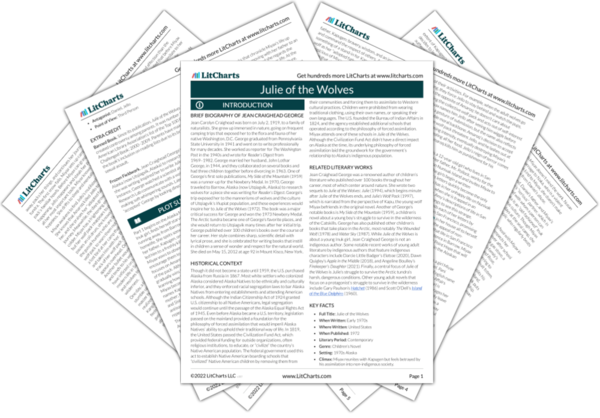Because the allure of a bounty incentivizes
gussak hunters to kill indiscriminately, they pose even more of a danger to the wolves than the grizzly bear. The
gussaks’ attitude toward hunting directly opposes the Inuit attitude. While the Inuit hunt only what they “need” out of respect for the animals who sacrifice their bodies to clothe and feed them, the
gussaks have no respect for the animals they kill and no sense of humankind’s place in the interconnected natural world. Greed motivates the
gussaks to hunt beyond what they need, which throws the natural world into chaotic unbalance.
